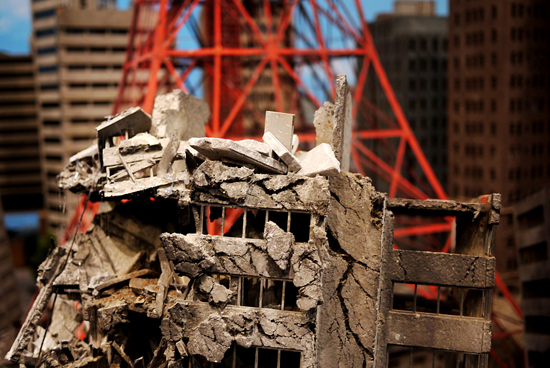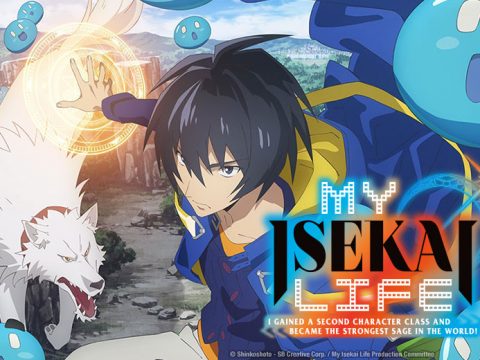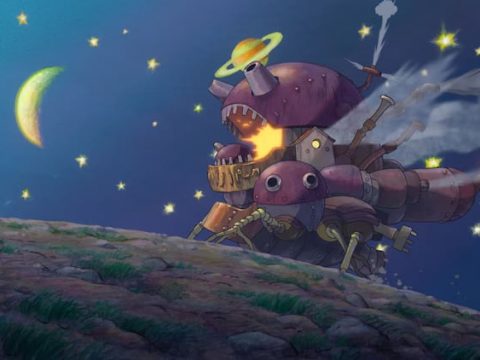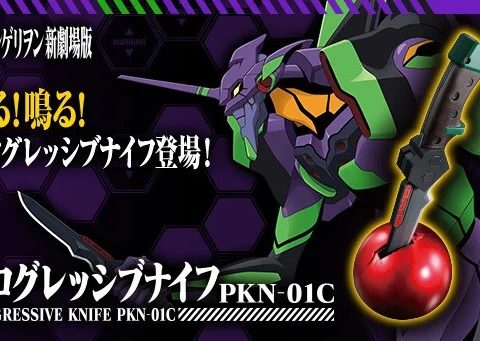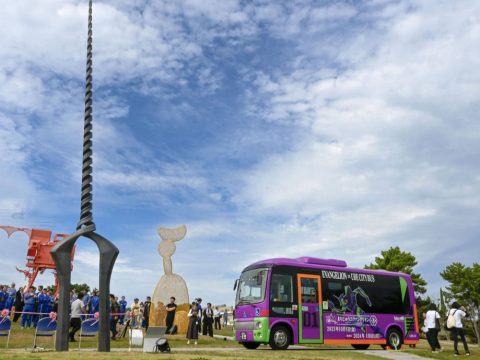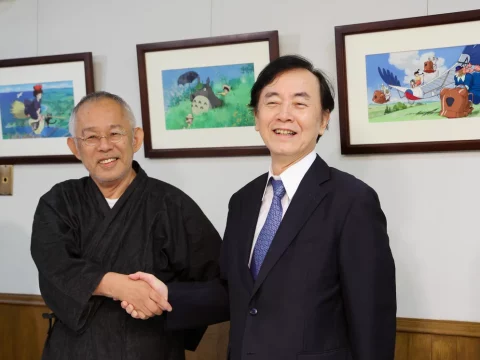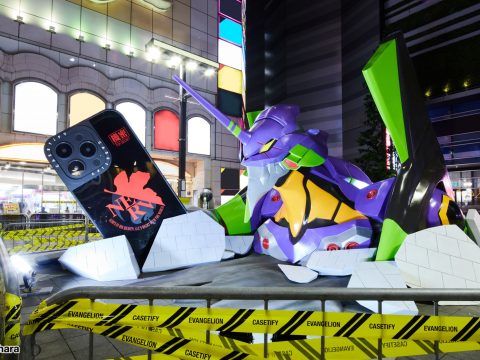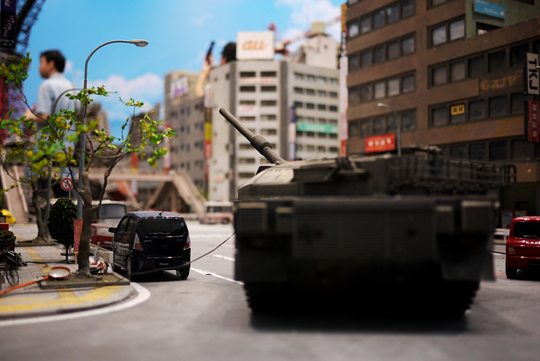
For the last ten years, Studio Ghibli (who really need no introduction, but just in case: Spirited Away, Princess Mononoke, My Neighbor Totoro) have been holding exhibitions at Tokyo’s Museum of Contemporary Art. This year, the studio invited famed anime director Hideaki Anno (Evangelion) to curate an exhibit based on tokusatsu films.
If tokusatsu doesn’t mean much to you, think Gamera, Ultraman, or Godzilla: old-school Japanese superhero and monster movies made not with computer effects, but real models of Tokyo really stomped, crushed and smashed by real giant monsters (or, at least, real people in real rubber monster suits).
These films and television shows, now largely supplanted by CG, were once crown jewels of the Japanese film industry, generating hits among children and adults with their scary monsters and super craftsmanship.
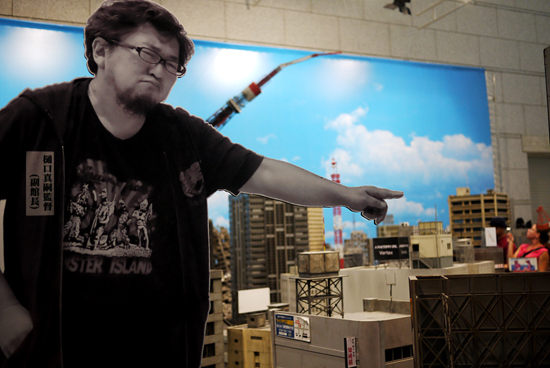
Anno, an avowed tokusatsu fan whose early works include an Ultraman short with him playing the starring role, brought together over 500 pieces of tokusatsu history for this exhibition, including models, props, production sketches and stills, and even suits used in Godzilla films. Walking the halls is enough to make any tokusatsu fan’s heart palpitate at considerable speed.
These artifacts alone probably would have sufficed, but Anno didn’t stop there, bringing together the greats of the tokusatsu industry in a kind of all-star reunion to produce a new short film specifically for the exhibition. The 10-minute film, hopefully destined for future DVD release, features the invasion and (spoiler!) destruction of Tokyo by an army of monsters from Hayao Miyazaki’s Nausicaa manga. Featuring an array of incredible effects and trick shots, it’s a tribute to how much can be achieved using practical, in-camera effects.
The adjacent room features several pieces from the new film, including bits of the set, monster puppets and a short making-of documentary, which reveals how the effects were done for any doubters (myself included) who assumed some of the film’s more impressive effects must have been done on a computer. The making-of also displays the on-set destruction of some of the film’s model buildings with delighted director and special effects legend Shinji Higuchi shouting “tanoshii!” (“this is fun!”).
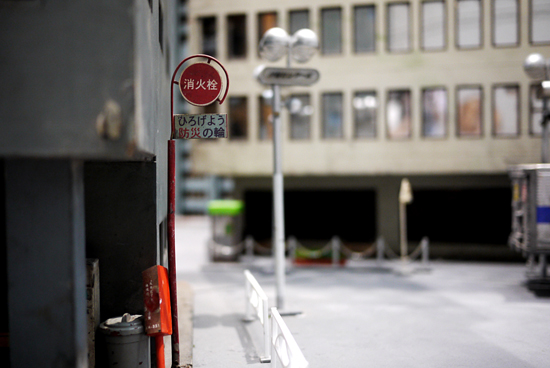
In that spirit, the final piece of the exhibit is probably its most fun – a full-size, walk-through tokusatsu set. A faithful reproduction of the Tokyo skyline (complete with a destroyed Tokyo Tower), the set gives visitors the chance to examine the incredible detail that goes in to one of these sets – all so that they can be destroyed by some rampaging monster. Museum-goers can also pose for photos in which they appear Godzilla-sized, though actually kicking down any buildings is highly discouraged.
The day I visited the exhibition, the halls were filled both with enchanted children and adults who felt like children all over again staring mouth agape at the actual suit used in Godzilla ’84 ohmigod – okay, maybe that was just me. Still, seeing this stuff in a museum and not on the silver screen is a bittersweet reminder that it is, indeed, history. Though a lot of the top tokusatsu men are still around, they won’t be forever – and aside from shorts and fan films, they aren’t getting a lot of work these days.
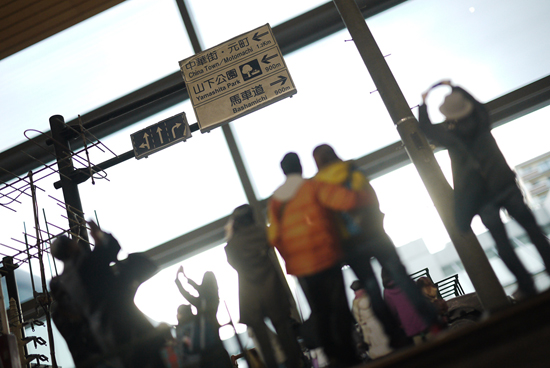
The creation is computer-generated effects is as admirable and no less an artistic feat than practical ones. But the masters of tokusatsu were engaged in something physical, which makes such an incredible event possible in the first place. I can’t help but cheekily imagine a similar 50-year Pixar retrospective, where the tour guide points to a gray box and explains this is the original hard drive containing all the 1s and 0s that make up Toy Story.
Somehow, that doesn’t sound quite as fun.
The Tokusatsu Special Effects Exhibition runs at the Tokyo Museum of Contemporary Art until October 8th. Check the website below for details.
https://www.ntv.co.jp/tokusatsu/english.html
